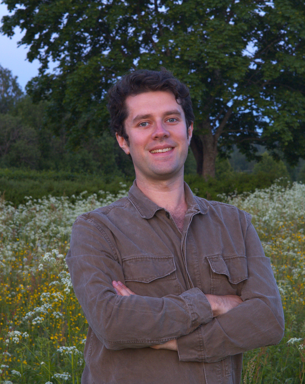
Alexander Bleasdale
Presentation
I am a postdoctoral researcher specialising in the application of remote sensing and AI to vegetation studies. My current work explores the feasibility of using camera trap networks to monitor forest phenology and habitat provision. I aim to demonstrate the broader value of camera trapping beyond traditional wildlife research, and to establish links between camera trap data and satellite imagery to enhance our understanding of vegetation–wildlife interactions.
My research centres on developing and implementing low-cost, practical sensing methods for observing environmental phenomena. I believe that the more accessible these techniques become, the more widely they can be adopted, amplifying their overall benefit to environmental research.
Research
My research at SLU focuses on establishing a new framework for utilising existing camera trap networks alongside satellite imagery to monitor large-scale changes in forest phenology. I am investigating the applicability of these sensing methods, supported by AI classification methods, to extract information on vegetation growth cycles in temperate and boreal forests. My work is part of "Big Picture", a Biodiversa+ funded project that aims to develop data management and analytical tools to integrate and enhance professional and citizen science camera-trapping initiatives across Europe.
Currently, I am applying semantic segmentation classifiers to monitor changes in vegetation green-up and senescence of individual tree species within forests and identify differences across species, locations, biomes, and between camera trap and satellite imaging methods. Monitoring changes in the seasonal timing of plant life cycles is essential for understanding atmosphere–biosphere interactions and the timing of key wildlife events. I am also working towards an instance segmentation model capable of identifying each individual fruit and flower within these camera trap datasets.
My interest in low-cost remote sensing for vegetation monitoring grew during my PhD research. I explored the use of novel sensing systems and deep learning for vegetation monitoring in agricultural contexts. In my thesis, “The Early Detection of Apple Scab Using Multispectral Imagery Under Natural Illumination Conditions”, I developed a low-cost, high-resolution multispectral imaging system capable of detecting apple scab infections earlier than standard RGB cameras under natural environmental conditions. By applying deep convolutional neural networks to classify multispectral imagery, I demonstrated that apple scab and other common diseases could be identified both rapidly and accurately. I found that near-infrared imagery provided a superior approach for early disease detection, and that a rapid, accurate, and accessible method for automated orchard monitoring was achievable.
Educational credentials
2025 – Present: Post-doctoral Researcher - Department of Wildlife, Fish and Environmental Studies, Swedish University of Agricultural Sciences, Sweden
2024 – 2025: Research Associate - Lancaster Environment Centre, Lancaster University, United Kingdom
2019 – 2024: Environmental Science (PhD) - Lancaster Environment Centre, Lancaster University, United Kingdom
2017 – 2018: Environmental Management (MSc) - Lancaster Environment Centre, Lancaster University, United Kingdom
2013 – 2017: Mechanical Engineering (BEng) - Coventry University, United Kingdom
Publications
Bleasdale, A.J. and Whyatt, J.D., 2025. Classifying early apple scab infections in multispectral imagery using convolutional neural networks. Artificial Intelligence in Agriculture, 15(1), pp.39-51. https://doi.org/10.1016/j.aiia.2024.10.001
Bleasdale, A., 2024. The Early Detection of Apple Scab Using Multispectral Imagery Under Natural Illumination Conditions (Doctoral dissertation, Lancaster University (United Kingdom)).
Bleasdale, A.J., Blackburn, G.A. and Whyatt, J.D., 2022. Feasibility of detecting apple scab infections using low-cost sensors and interpreting radiation interactions with scab lesions. International Journal of Remote Sensing, 43(13), pp.4984-5005. https://doi.org/10.1080/01431161.2022.2122895